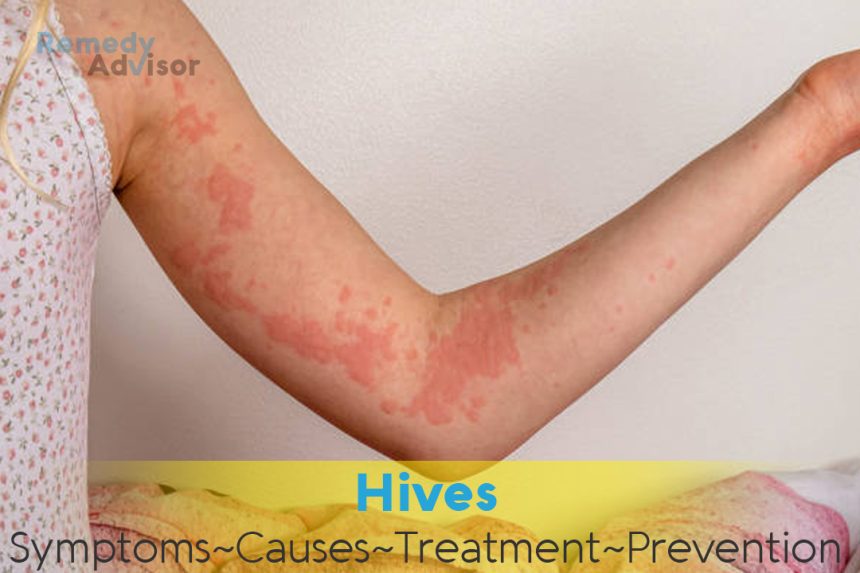What is it
Hives, or urticaria, are red, extremely itchy areas of swollen skin called wheals that can range in size from pin-size dots to large patches. These wheals may be circular or irregular in shape, but with distinct edges. Li more severe cases, called angioedema, there is swelling of the mucous membranes, eyelids, lips, and tongue.
Hives are common: up to 20 percent of the population is affected at some time, and the dis- order is especially common for people who have had other allergic reactions, such as hay fever. Hives come without warning and may disappear in less than two hours, but they can last as long as a day or two, or recur on and off for months.
Symptoms
- Sudden onset of itching of varying intensity, with swelling of the skin’s surface into red or skin-colored welts or blisters. The welts may change shape, develop a white center, or suddenly disappear without cause in a matter of minutes or hours.
- A potentially dangerous subcutaneous swelling called angioedema. It occurs typically around the lips and eyes, accompanied by a burning sensation.
What causes it
Hives are caused by an allergic reaction to a substance, virus, or insect bite. Tension and emotional stress can also trigger hives, as can something you’ve eaten, touched, or inhaled. Antibiotics are frequently the cause of hives. Penicillin is the classic trigger and can induce the condition even if someone has taken the antibiotic many times before without any problem. Aspirin is another offender, as is the coating used on multivitamins and other pills. Reactions to food additives, specific foods, cosmetic ingredients, and animal dander may be involved. Some people develop hives after taking a hot shower, bath, or Jacuzzi, while others develop them after being out in the sun, or exposed to cold wind or water.
Viral infections and sore throats may cause hives, as can hepatitis sinusitis, and mononucleosis. Many people are surprised to find that they develop hives after an exercise session. While you may search for an exact cause for your hives, remember that in more than half of the cases, an exact cause is never discovered.
What if you do nothing
Hives generally will go away on their own within several hours.
Home remedies
Try over-the-counter remedies
Antihistamines are the mainstay of hive relief. The best way to relieve the itching and swelling of hives is to take an oral antihistamine such as Benadryl or Chlor-Trimeton. Remember, however, that most antihistamines will produce drowsiness, so follow package directions.
Ice them
For temporary relief of itching and swelling of small hives, rub ice directly over the hives for several minutes. This will slow the release of itch-causing histamines.
Soak and soothe
Add colloidal oatmeal to a tepid bath and soak in the water for 15 minutes to temporarily soothe your skin. Cold compresses and calamine lotion can also help relieve the itching.
Analyze your diet
Temporarily remove or permanently eliminate foods from your diet that cause hives to regularly develop. Some of the prime offenders often include shellfish, dairy products, nuts, pork, strawberries, chocolate, tomatoes, and oranges.
Prevention
Find your allergen
This may be easier said than done, and unfortunately, many people never find the exact cause of their problem because there are multiple trigger factors.
Avoid areas populated by bees
If you are at risk for an allergic reaction to bee stings, you are a potential candidate for anaphylactic shock, a life-threatening situation that can lead to suffocation, loss of consciousness, and death. Be sure to carry a special anaphylaxis emergency kit with you at all times.







